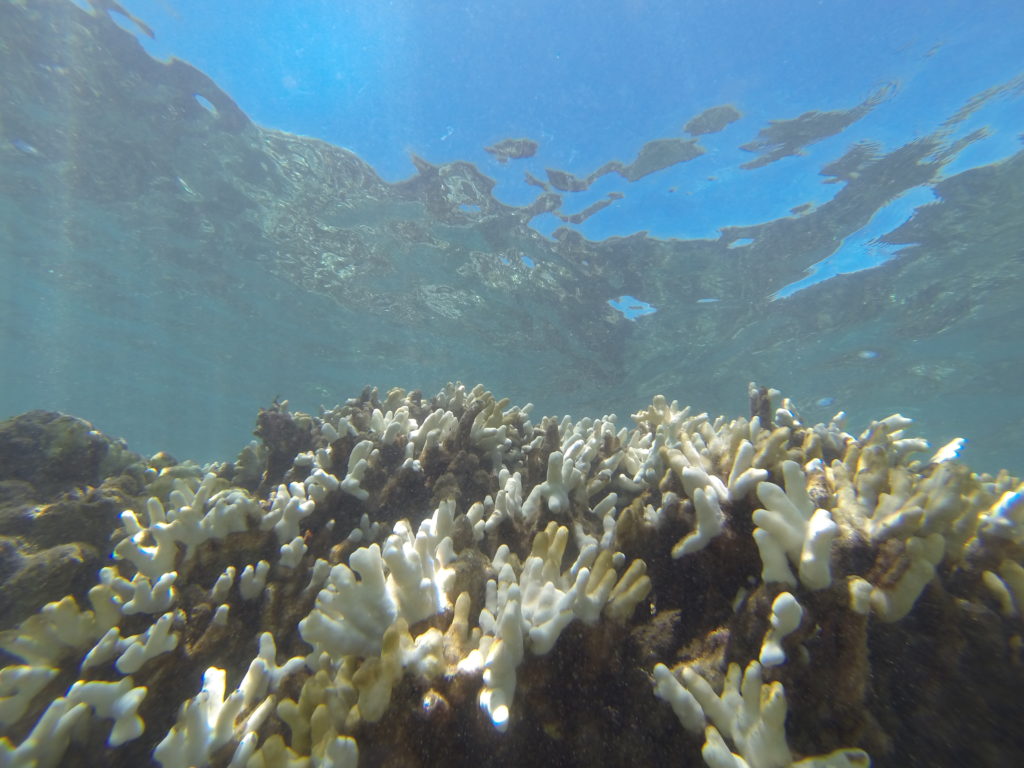How the 2015 bleaching event impacted Maui’s corals
Maui Nui Marine Resource Council was honored to host a presentation by Russell Sparks, Aquatic Biologist, State of Hawaii’s Department of Aquatic Resources ( Department of Land and Natural Resources) at our March 2018 meeting.
Sparks presented reports on the toll of the 2015 coral bleaching event that occurred in Hawai’i and worldwide due to El Nino conditions.
Sheltered from cooling breezes and waves, Maui’s leeward shores saw especially warm ocean conditions in 2015 and bleaching events were widespread. That summer, biologists watched in horror as a massive 400 year old coral nicknamed “Big Mama” succumbed to bleaching and perished in November of 2015.

DCIM100GOPRO
Sparks noted that almost all of the cauliflower coral off Maui’s coasts bleached. Lobe coral suffered the most impacts of bleaching and bleaching-related deaths. Smaller colonies of corals had higher rates of mortality, while bigger colonies showed more fragmentation during the bleaching event.
Biologists noted that some reefs did not die, and are striving to learn why they showed greater resistance.
Following this event, marine biologists have noted that there’s been a shift toward smaller sized coral colonies across the leeward nearshore areas of Maui.
In order for corals to adapt and survive into the future with the ongoing global warming concerns, we all need to do more to help reefs develop resiliency to these changes. Corals can survive and adapt if we reduce local threats such as overfishing, sedimentation and nutrient pollution. Support local efforts to address these man made local threats and coral reefs should better adjust to the warming world oceans.



No Comments
Sorry, the comment form is closed at this time.